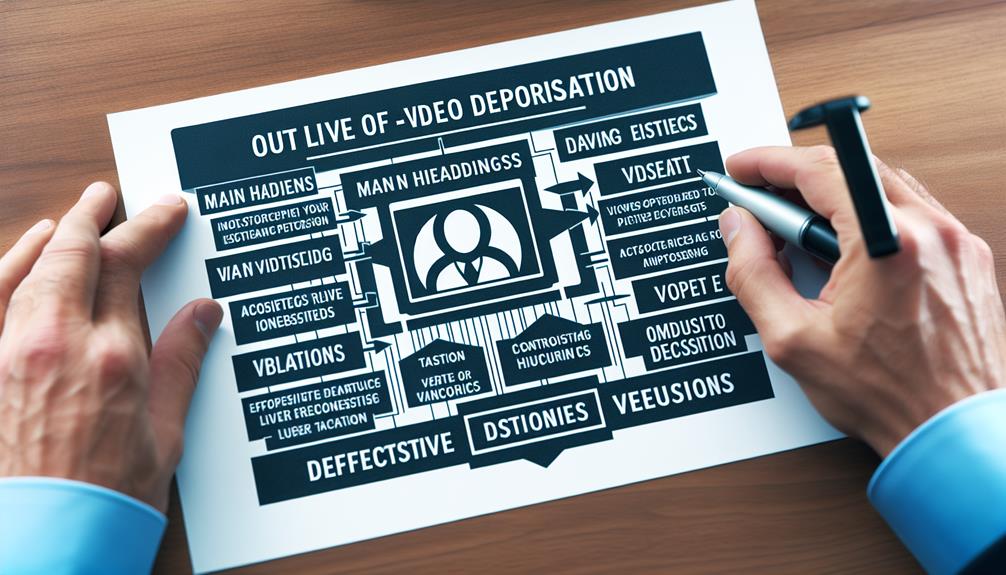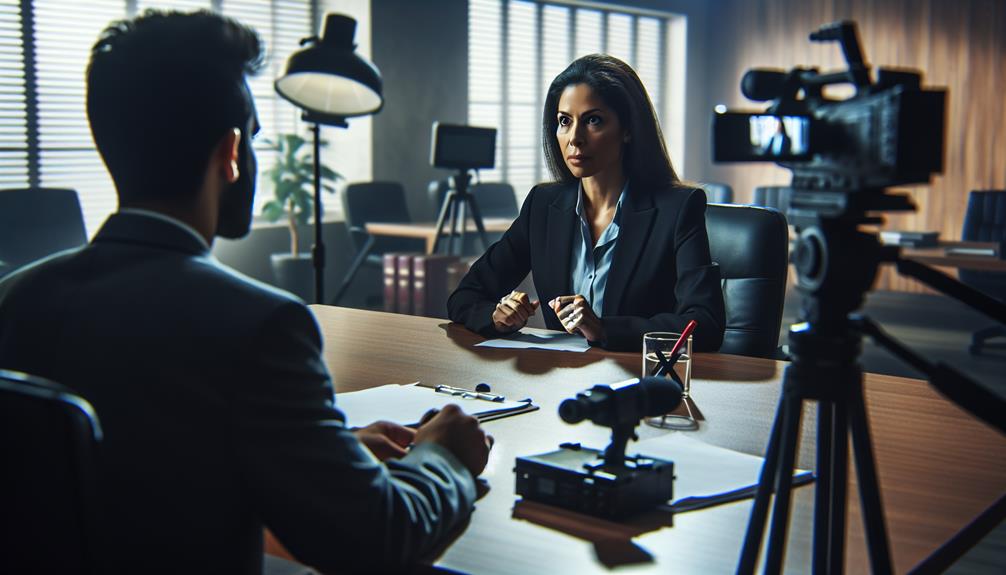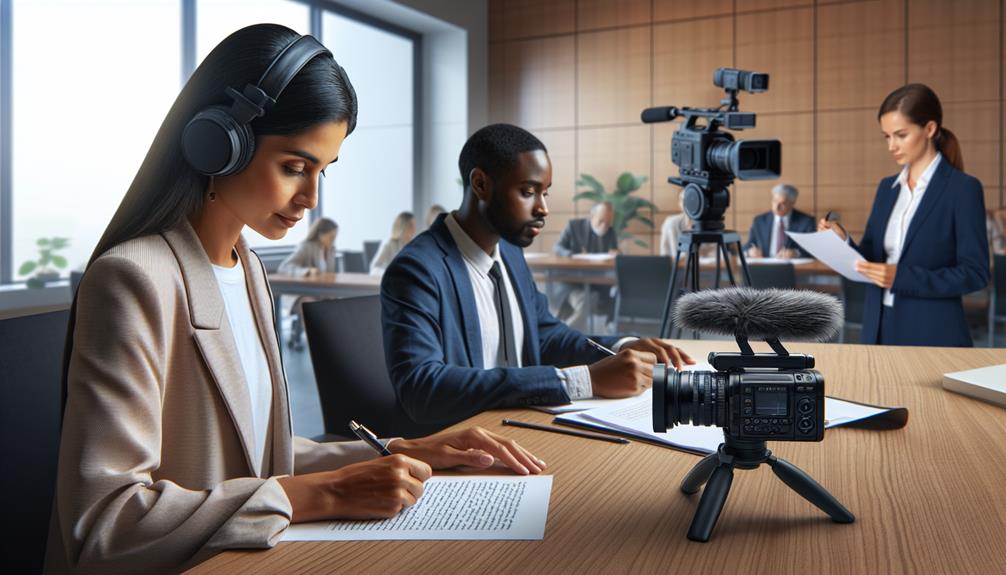They say a picture is worth a thousand words, but in the realm of legal proceedings, a video can speak volumes. As someone who has witnessed the power of a well-executed video deposition, I understand the importance of following the top strategies if you want to do your best.
From understanding the purpose and scope to familiarizing oneself with the video equipment, there are key steps that can make or break the outcome of a video deposition.
In this discussion, I will delve into the top strategies that can help you navigate this intricate process with confidence and finesse. So, let’s embark on this journey together, uncovering the secrets to a successful video deposition.
Key Takeaways
- Video depositions provide an accurate and permanent record of witness statements, allowing for visual presentation of evidence.
- Gathering necessary evidence and materials, such as relevant documents and expert opinions, is crucial to support the case during a video deposition.
- Preparing a clear and concise outline acts as a roadmap for effective communication and delivery of key points during the deposition.
- Familiarizing yourself with the video equipment and practicing deposition techniques, including clear and concise responses, body language, and adapting to the video format, are essential for a successful video deposition.
Understand the Purpose and Scope

To effectively navigate the process of video depositions, it’s crucial to grasp the purpose and scope of this crucial legal tool. Video depositions serve the purpose of capturing witness testimonies, allowing attorneys to present and analyze evidence in a visually compelling manner. By understanding the purpose behind video depositions, legal professionals can leverage this tool to its fullest potential.
In terms of scope comprehension, video depositions offer a unique advantage by providing an accurate and permanent record of witness statements. Attorneys can use these recordings to review and analyze witness testimony, identifying inconsistencies or contradictions that may strengthen their case. Additionally, video depositions can be used to impeach witnesses during trial, as the recorded testimony can be compared to the witness’s live testimony in court.
Furthermore, the scope of video depositions extends beyond the courtroom. With advancements in technology, it’s now possible to conduct video depositions remotely, eliminating the need for travel and reducing costs. This innovative approach allows legal teams to collaborate seamlessly and efficiently, regardless of geographical constraints.
Gather All Necessary Evidence and Materials
Gathering all necessary evidence and materials is a crucial step in preparing for a video deposition, ensuring that attorneys have a comprehensive and compelling case. When it comes to video depositions, having the right evidence can make all the difference. It’s essential to gather all relevant documents, photographs, and any other evidence that supports your case. This includes medical records, police reports, expert opinions, and any other pertinent information. By meticulously collecting and organizing this necessary evidence, you can strengthen your argument and present a more persuasive case during the deposition.
Furthermore, understanding and utilizing effective deposition techniques can greatly enhance your chances of success. One technique is to prepare a deposition outline or checklist to ensure that no important points are missed. This will help you stay focused and ensure that you cover all necessary topics.
Another technique is to use visuals such as charts, graphs, or videos to present complex information in a more accessible and impactful way. By incorporating these innovative techniques, you can engage the jury and leave a lasting impression.
Prepare a Clear and Concise Outline

Now that all the necessary evidence and materials have been gathered, it’s crucial to prepare a clear and concise outline for the video deposition, ensuring that important points are effectively communicated. A clear outline acts as a roadmap, guiding the deposition process and helping to maintain focus throughout. It allows for a structured and organized approach, ensuring that key topics and questions are addressed in a logical sequence.
When preparing a clear outline, it’s important to be concise in your preparation. This means distilling complex information into simple and understandable points. By doing so, you ensure that the deposition remains on track and that the video doesn’t become cluttered with unnecessary details. A concise preparation also allows for a more efficient use of time during the deposition, as it reduces the need for excessive questioning and clarifications.
A clear outline and concise preparation also facilitate effective communication. By organizing your thoughts and presenting them in a clear and concise manner, you enable the viewer to understand the key points without confusion. This is especially important in video depositions, where the absence of physical presence can make it more challenging to convey information effectively. A clear outline and concise preparation ensure that your message is delivered with precision and impact.
Familiarize Yourself With the Video Equipment
Before diving into the video deposition process, it’s essential to familiarize oneself with the intricacies of the video equipment. Understanding how to set up and operate the video deposition equipment is crucial for a successful deposition. By taking the time to familiarize yourself with the equipment, you can ensure that everything runs smoothly and efficiently during the deposition.
Setting up the video equipment involves several important steps. First, make sure you have all the necessary components, such as cameras, microphones, and lighting. Familiarize yourself with each piece of equipment and how it functions. Test the equipment before the deposition to ensure everything is working properly.
Additionally, learn how to adjust the camera angles and microphone settings for optimal recording. Understanding the different features and settings of the video equipment will allow you to capture clear and high-quality footage during the deposition.
Practice and Rehearse Your Deposition Techniques

To ensure a successful deposition, it’s crucial to dedicate time and effort to practicing and rehearsing your deposition techniques. Simply showing up and relying on your natural abilities may not be enough. By actively practicing and rehearsing, you can refine your skills and enhance your performance during the actual video deposition.
Practicing your deposition techniques allows you to develop a deep understanding of the process. You can familiarize yourself with the types of questions typically asked, anticipate objections, and practice delivering clear and concise responses. By doing so, you can build confidence and maintain composure even in high-pressure situations.
Rehearsing your deposition skills also enables you to identify areas for improvement. Through repeated practice, you can refine your communication style, body language, and overall presentation. By receiving feedback from colleagues or mentors, you can gain valuable insights and make necessary adjustments to enhance your performance.
Moreover, practicing and rehearsing your deposition techniques allows you to adapt to the video format. It helps you become comfortable with the camera, microphone, and other equipment, ensuring that you can present yourself effectively in a virtual setting.
Conclusion
In order to do a successful video deposition, be sure to understand the purpose and scope of the deposition. Start with gathering all the necessary evidence and materials, preparing a clear and concise outline, familiarizing yourself with the video equipment, and practicing and rehearsing your deposition techniques.
By following these strategies, you can effectively present your case and obtain valuable testimony from witnesses.
And at the end of the day, a well made video deposition can have a significant impact on the outcome of a legal proceeding.
Thanks for reading, I hope you found it helpful!

